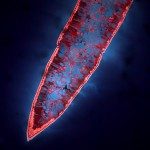About
The Archaea represent an understudied but important fraction of microbial diversity present in a wide variety of environments and ecosystems, including the human body. They have key ecological roles and a unique place in the Tree of Life, notably via their intriguing evolutionary link with Eukaryotes. Technological progresses are providing an unprecedented wealth of sequence data, filling up the archaeal tree with novel leaves and major branches. This has revealed the presence of eukaryotic-like characters previously thought to be absent from Archaea, and re-launched the hotly debated issue of eukaryotic origins. Recent phylogenomic data have supported an emergence of Eukaryotes from within the Archaea, in particular as a close relative of the TACK group, a large super-phylum encompassing Thaumarchaeota, Aigarchaeota, Crenarchaeota and Korarchaeota. However, despite this burst of data, the evolutionary history of the third domain of life remains largely unknown. This is exemplified by the debate regarding the position of its root, which has profound implications on our understanding of the nature of the last archaeal common ancestor and on the processes involved in the origin and early evolution of this domain.
With this project we aim at a phylum-level investigation of the origin and early evolution of the Archaea. We will investigate a number of important issues, such as the placement of novel and potentially deep-emerging candidate phyla, the position of the root and the nature of the last common archaeal ancestor, the genome dynamics and cellular changes that accompanied the early diversification of the Archaea, and the evolutionary interplay between Archaea and Eukaryotes. To do so, we will develop innovative and cutting-edge phylogenomics approaches aimed at lifting a number of important challenges linked to the analysis of very ancient evolutionary events and the treatment of ever-larger sequence datasets.
The project will produce a large quantity of structured data that will be made freely available for the scientific community and novel findings with an impact on different fields of investigation, way beyond phylogenomics. These include archaeal biology and ecology, microbial evolutionary cell biology, paleogeochemistry and early Earth.






